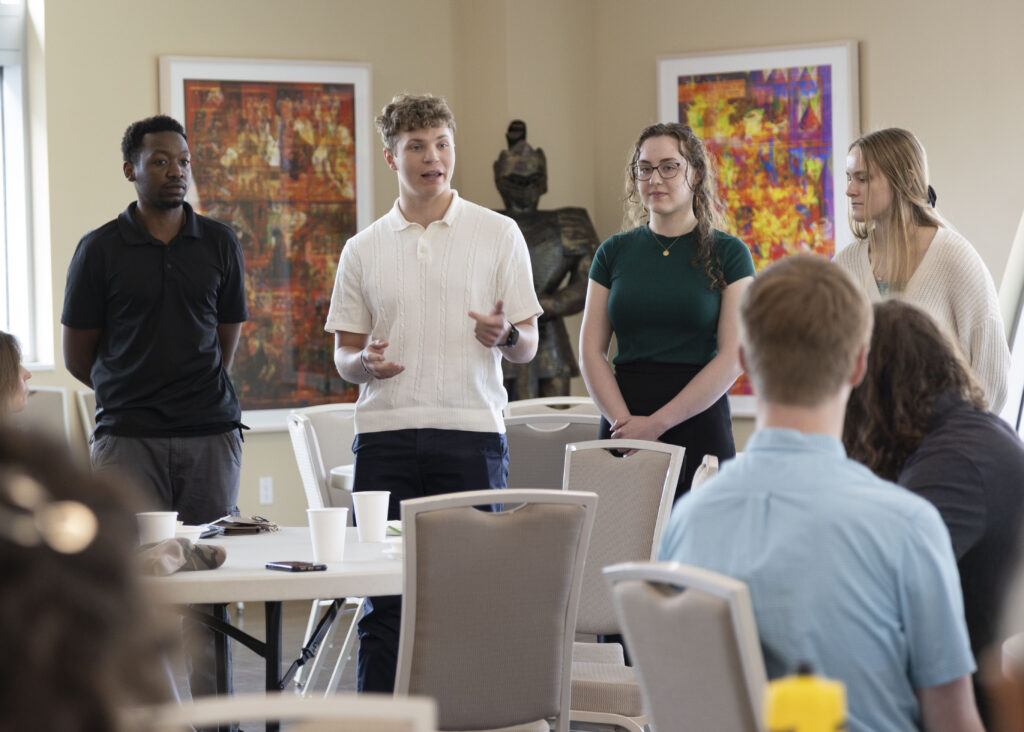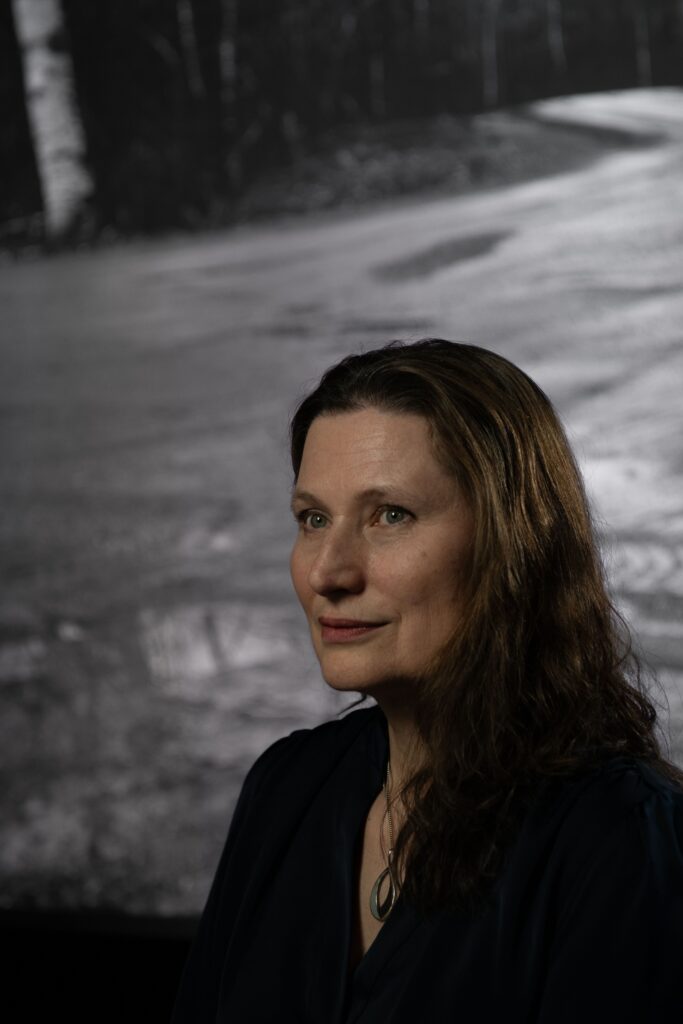‘White Fragility’ dialogue engages vulnerabilities
Best-selling book provides impetus for well-attended campus discussion series
The reverberations of white privilege negatively impact people of color, and for faculty and staff at Saint Michael’s College, a series of discussions on White Fragility, a New York Times best-seller written by Robin DiAngelo, opened an honest discussion about whiteness and the societal manifestation of racial bias. The discussions were held in the Roy Room of the Dion Family Student Center at 12:15 p.m. on Monday, February 3, and the evenings of Tuesday, February 4, and Monday, February 10.
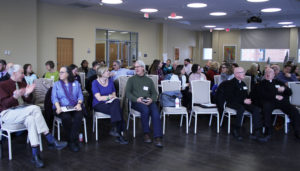
Saint Michael’s community members have break-out discussions in a recent Roy Room dialogue about the book “White Fragility.”
The Office of the President and the Edmundite Center for Peace and Justice provided copies of this book to faculty and staff as this year’s Common Read. Preceding the discussions, the facilitators presented a provocative quotation from DiAngelo’s book: “For now, try to let go of your individual narrative and grapple with the collective messages we all receive as members of a larger shared culture. Work to see how these messages have shaped your life, rather than use some aspect of your story to excuse yourself from their impact.”
This quotation was highlighted as a means of calling faculty and staff “to reflect on a foundational aspect of racism that seriously impacts our students and colleagues of Color.”
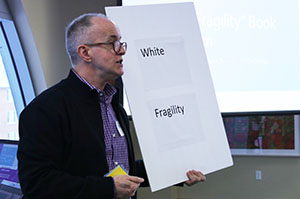
Peter Harrigan of the Fine Arts faculty shares personal experiences at the session.
Facilitating this discussion were Kathy Butts, director of the Bergeron Wellness Center, and Peter Harrigan, Chair of the Fine Arts Department. Butts and Harrigan began the discussion with an expression of gratitude to faculty and staff for their attendance and willingness to unfold the complexities of bias that exist within and outside of the campus community.
Preceding Butts’ commentary, Harrigan initiated the conversation with a compelling testimony of racial bias, followed by a personal reflection. As a sense of vulnerability presented itself to the audience, attendees were invited to partake in an open, honest conversation. The facilitators provided thought-provoking statements from White Fragility to guide a group cogitation. Attendees were then invited to honestly share opinions and thoughts with surrounding peers for designated durations.
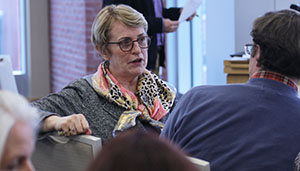
President Sterritt shares her thoughts with Jonathan D’Amore from the president’s office during one recent discussion.
Among key take-aways from the discussion, according to participants and observers afterward: Confronting one’s white fragility is a step towards amending damages inflicted by racism, and hiding from vulnerability will only enlarge the issue. As different ideas were provided by faculty and staff, attendees left the event with an expansive mindset on the implications of white fragility and a call to action. However, the facilitators noted that one event will not repair racism. Rather, persistent efforts to tackle its complexity, over time, will eventually lead to the “beloved community” we strive to manifest in our society.




